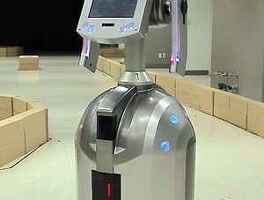6) Control Architecture Design and Implementation
Figure 11: Designed control architecture for the service robots
Major hardware components of the service robot are a mobile robot, a hand, a manipulator and passive trailers. There are also various functional software modules such as localization, path planner, task planner, kinematic control, eye-in-hand visual servoing and so forth. In order to integrate all the components efficiently, a well established control architecture design is essential.
I designed three diagrams as follows: 1) Layered functionality diagram – designed for classification of each modules according to the functionality. Information flow and connectivity of each modules are described. 2) Class diagram – designed to provide coding framework according to the attributes. It is also intended for reusability and reconfigurability of software modules. 3) Petri Nets based configuration diagram – designed for structural description of sequential execution of behaviors and error handling flows.
It is significant to combine deliberative planning and reactive behaviors in order to guarantee task completion in the dynamic, uncertain environments. All the research outputs are successfully implemented on the PSR platform, which experimentally showed that our control architecture is well established and useful for practical applications.
'Research' 카테고리의 다른 글
| Manipulation of the Service Robot PSR1 (0) | 2010.01.21 |
|---|---|
| Museum tour guide robot Jinny (0) | 2010.01.21 |
| Design and Control of a Multiple Trailer System (0) | 2010.01.21 |
| Design and Control of a multi-fingered Robot Hand (0) | 2010.01.21 |
| Autonomous Navigation of the Indoor Service Robot PSR (0) | 2010.01.21 |





